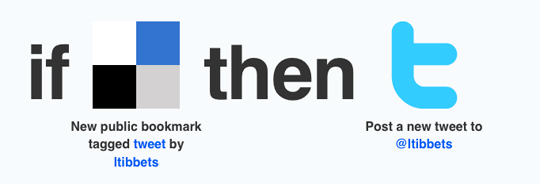Tool of the week: ifttt, shorthand for “if this then that”.
What is it? This tool is still in private beta but it is worth applying for an invitation and waiting to see when it goes public as it promises interesting possibilities for journalists.
The best way to understand it is to read this description of ifttt, which explains that the tool works on the premise of “if this then that” or “when something happens (this) then do something else (that)”.
The ifttt site explains it clearly:
Here is an example of a task that tweets every new bookmark from my Delicious account tagged “tweet”:
The ifttt blog offers further explanation:
ifttt isn’t a programming language or app building tool, but rather a much simpler solution. Digital duct tape if you will, allowing you to connect any two services together. You can leave the hard work of creating the individual tools to the engineers and designers. Much like in the physical world when a 12-year-old wants a lightsaber, cuts the handle off an old broom and shoves a bike grip on the other end, you can take two things in the digital world and combine them in ways the original creators never imagined.
A quick look at ifttt on Twitter will give you a sense of what is happening in the development of the tool.
How is it of use to journalists?
It could be extremely useful to journalists, for example, by providing a simple way to capture data from existing online platforms, and also to anyone who wants to set up automated posts.

